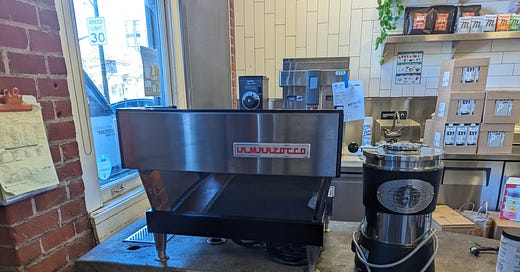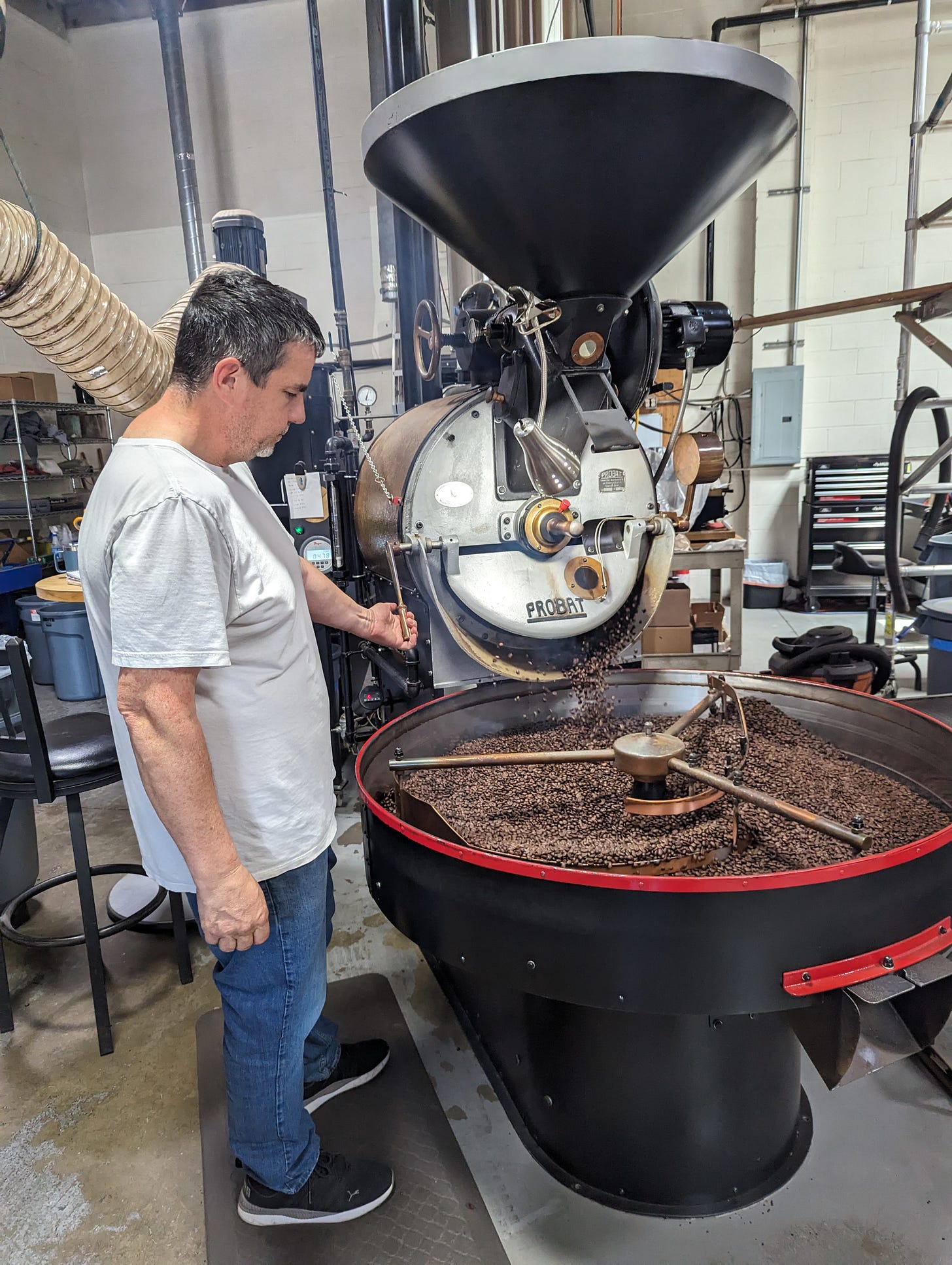The Beginning: Diving In
Reflections on starting a coffee shop business in San Francisco part 1
Hello peeps who want to quit their day jobs and make coffee all day! I’m here to write a little bit about the work required to run my little “coffee shop on rails” and what has worked and what hasn't.
It’s been a little over 6 months so far of selling coffee - so I think now is a good time for reflection!
About Paper Son Coffee
Here’s our mission:
At Paper Son Coffee we believe that good coffee can take many forms. We serve the best locally roasted coffee we can find, and aim to nail the classics while also offering customers adventurous new flavor profiles.
Coffee shop on rails? While we are technically a pop-up, the level of effort required has been full time. We are open 6 days a week from 8am to 2pm and pay the bakery monthly rent.
In exchange for providing coffee service to the bakery throughout the week, we have a small physical space with luxuries that aren't available to most popups - plumbed in water supply and commercial power.
More importantly we were able to access to some of equipment from their previous coffee program - including a Linea Classic 2EE (!!!) - which we refurbished to prior to starting.
We’re on the hunt for a physical location and have saved some profits from the past few months to help bootstrap our buildout.
About Me
I started moonlighting as a barista on weekends in 2018 at Contraband Coffee. The commercial workflow and high-speed, high-quality demands presented a steep learning curve. My first stint on the espresso machine lasted about 20 minutes - I got so stressed that I asked to tag out and go back to the register.
Over the years, I’ve worked part time at a few spots - Contraband, Breck’s, jinabakes, Third Wheel Coffee.
After I left the tech world in a layoff in early 2023, I decided to put my learnings to the test and try to run my own coffee thing from the ground up.
Preparations to Open
I'm going to highlight three things that we dedicated most of our time to before starting to sell coffee.
Figuring out the Menu
I wanted our menu to align closely with our mission. For classic drinks, this meant prioritizing the distinct taste of the coffee. The most common complaint that I’ve seen about newer coffee shops is that the coffee tastes “weak”. With lighter roasts and longer shot ratios, the intensity of flavor is reduced. We decided to downsize our latte from the usual 12oz to 10oz to ensure the espresso flavor cuts through. Finally, I added a 6oz flat white inspired by my love for New Zealand. :)
Our pricing strategy was based on maintaining a 4-5x margin on ingredient costs. While our prices ended up slightly lower than some specialty spots in the neighborhood the difference wasn't usually that significant.
On the other hand, for specialty drinks the intention was to use coffee as an ingredient in a greater whole. Here we experimented with a bunch of flavors and found a few we liked but sometimes they didn’t hold up in the fridge (homemade banana syrup) or were difficult to prepare while on shift (li-hing marmalade). Our first barista, Helena, came up with the idea of adding saline solution to drinks. It really makes a big difference!
Securing Coffee Supply
I reached out to Vince at Contraband to help supply us with some coffee and he was super supportive. Having past experience in the industry was helpful here, as it was as easy as a phone call to get all set up. It’s quite fun to see the quantity of coffee in storage and the amount that is produced each week, even from a relatively small roaster like Contraband.
He was also nice enough to provide some initial tech support and arrange for weekly delivery. A few quick visits to the roastery to dial in the coffee we wanted and we were ready to go! The flavor profile in mind was something comforting, that would also stand up well in the signature drinks.
While most people expect light roasts from speciality coffee shops, I opted for a more developed medium roast to help deliver classic chocolate and caramel flavors that would help to balance out in our signature drinks too.
Gear
There’s probably a whole post we can spend on gear, but initially the focus was on a simple, repeatable espresso. We bought a bunch of cheap scales (AliExpress $25/ea), 20g VSTs (eBay $20/ea), a calibrated tamper (Amazon $30), and dosing cups (AliExpress $4/ea). Dosing cups for speed, cleanliness and ease of use when measuring - I hate weighing portafilters.
Lowered the pump pressure to 7.5bar on the gauge and aimed for a 18g:40g ratio to avoid acid bomb shots. Using all the resources available to us before spending money was the priority here.
Since the machine doesn’t do pre infusion or any pressure profiling, the choice to use a more developed roast helped us to keep the extraction tasting good without any brewing tricks.
The next goal was to gather enough cash to upgrade the gear for more consistency and speed, starting with the grinders.






enjoyed reading the behind the scenes, keep it up, alex! :)